On the surface, coffee blending seems straightforward. What's so complicated about mixing beans to create a new flavor combination? It's just like making yourself a sandwich; you pick ingredients you like individually — say, turkey, avocado, and cheese — and combine them to create the taste you love, right?
Once you start blending coffees, you'll realize there's more to it than just roasting, grinding, and brewing different varieties together. Achieving the perfect blend involves understanding the unique flavors of each bean variety and how they affect the overall taste. It requires experimentation and careful consideration of roast levels and brewing techniques.

In this article, we'll take you through the basics of concocting the ideal coffee blend. We'll help you understand the nuances of combining beans so you can jumpstart your path as a coffee blending master who can transform every brew into a bespoke taste experience.
What are Coffee Blends?
Coffee blends are exactly what they sound like: a combination of two or more single-origin coffees from different locales. These origins can vary greatly, from varying countries and regions to even micro-lots within a single farm.
Unlike single-origin coffees that showcase the distinct flavors of one region, blends bring out and combine the best qualities of whole-bean coffee from multiple regions. They offer a versatile, well-rounded taste profile that appeals to a wide range of palates. While especially favored for espresso-based drinks whose nuanced flavors shine through milk or cream, blends are also ideal for black coffee.
How Coffee Blending Evolved
Coffee blending has a long history dating back to the early days of the coffee trade. Initially, blending arose out of necessity to maintain consistent flavor as single-origin coffee beans were transported around the globe.
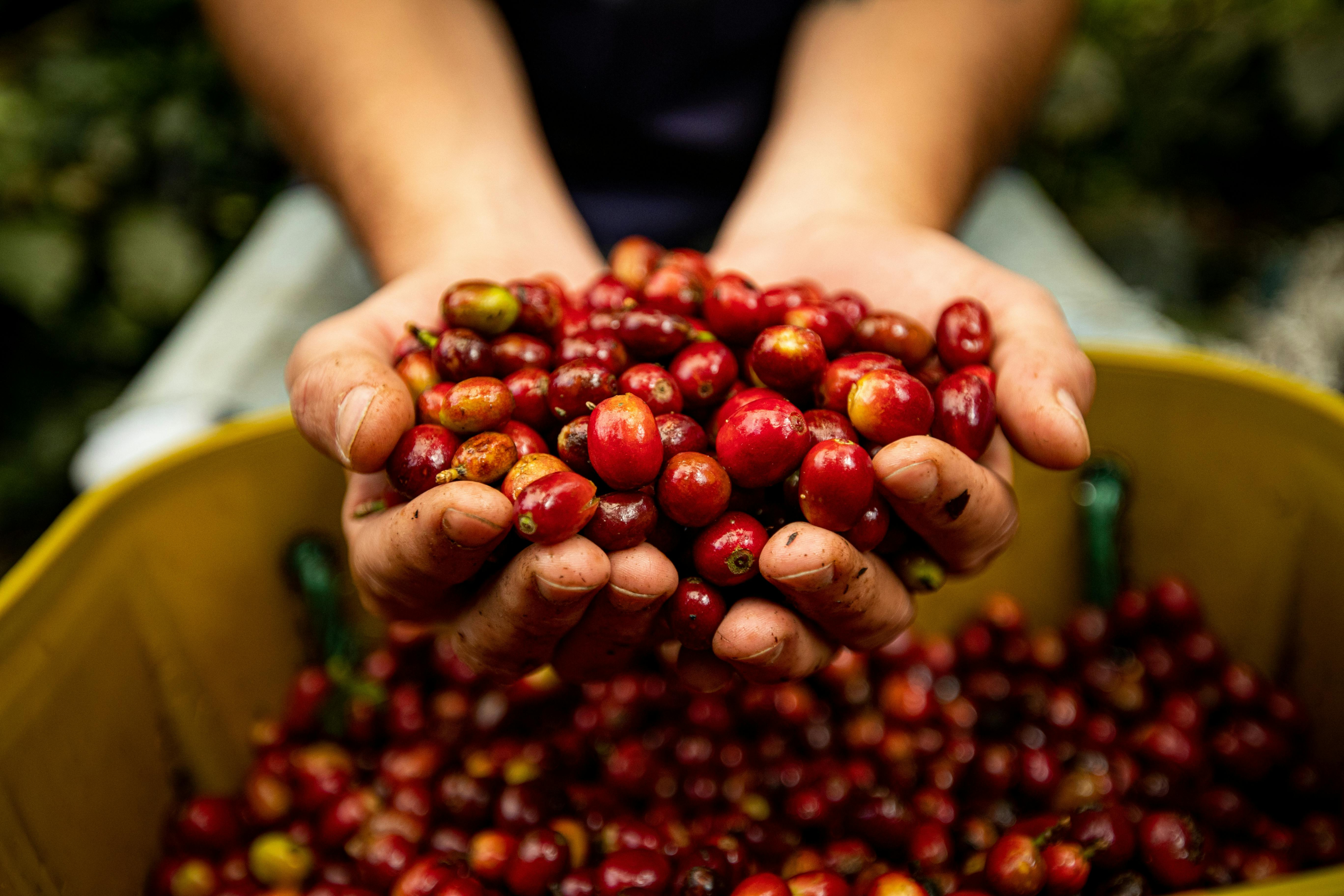
As new coffee-growing regions emerged and roasting techniques improved, blending became a way to create consistent flavor, experiment with new taste profiles, and cater to a wider audience.
Why Blend Coffee?
Roasters create blends for the following reasons:
-
Consistent Flavor. Ensures a familiar taste for major brands, despite natural coffee variations.
-
Complexity & Balance. Creates a richer cup by combining bright & smooth beans.
-
Cost-Effectiveness. Stretches high-quality beans by blending with affordable options.
-
Targeted Flavors. Caters to regional preferences with specific bean ratios.
-
Innovation & Differentiation. Unique blends through bean experimentation for brand identity.
Why Coffee Blends Get a Bad Rap
Coffee blends weren't always celebrated. In the past, some roasters used blends to:
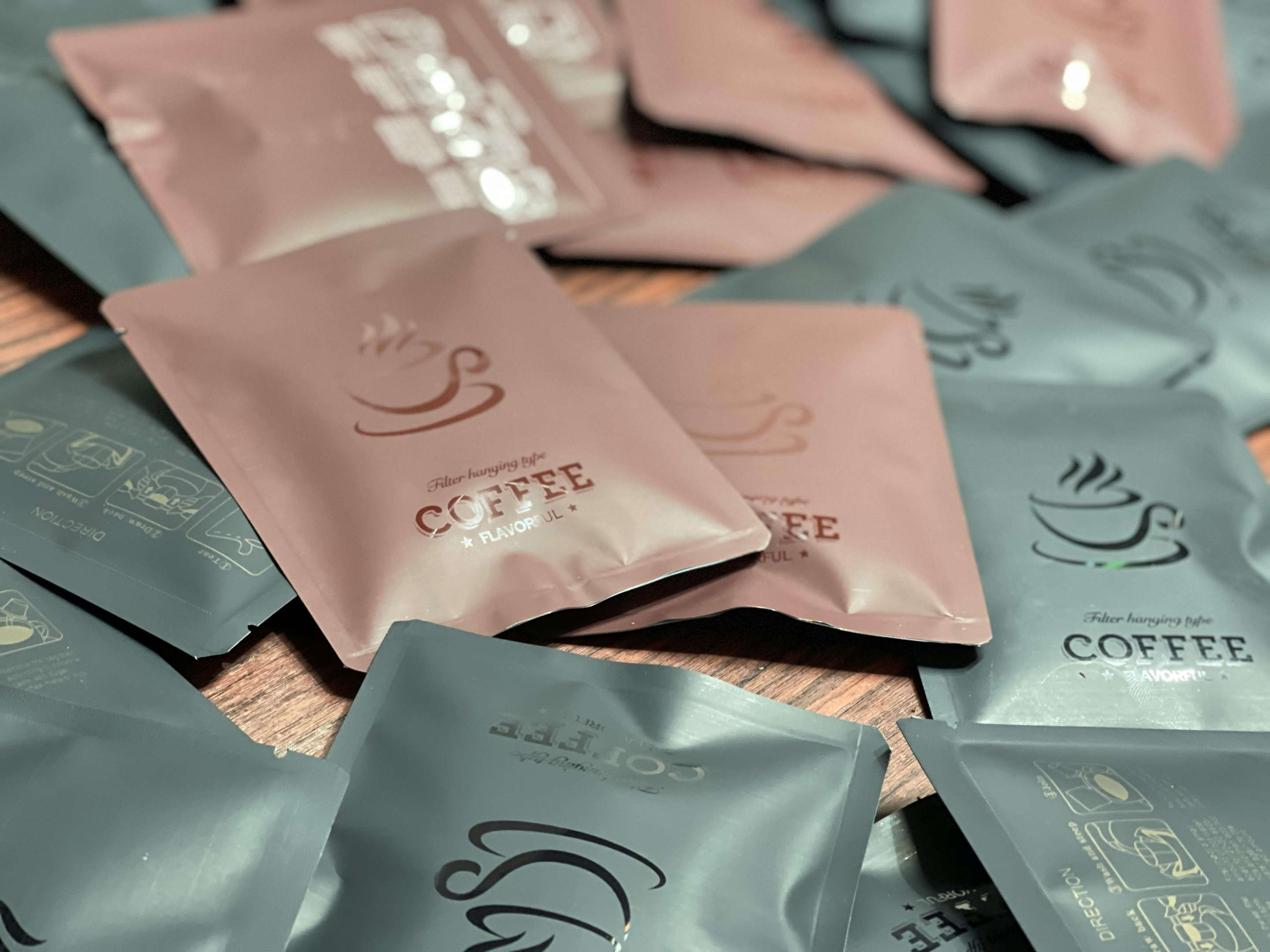
- Hide lower-quality beans.Some manufacturers would mix cheaper beans with better ones or old coffee with fresh coffee, misleading customers about the overall quality.
-
Stretch profits. Adding fillers like chicory or roasted grains bulked up blends at a lower cost, but raised concerns about authenticity among coffee purists.
-
Mask unique flavors. Blending was seen as diluting the distinctive tastes of single-origin coffees.
Thankfully, these practices are less common today. Skilled roasters now use blending as a craft to enhance flavors and create a more balanced cup. This shift towards quality and transparency has led to a renewed appreciation for the artistry of coffee blending.
Popular Coffee Blends
Coffee blends often have intriguing names that hint at the experience they aim to provide. Here are a few popular blends that have captivated coffee drinkers worldwide:
-
Breakfast Blend. Perfect for mornings, the breakfast blend is subtly complex, bright, invigorating, and offers a smooth and mild flavor.
-
Mocha Java. This classic blend of fruity Yemeni and earthy Indonesian Java beans is renowned for its superb balance and rich flavor.
-
Espresso Blend. Espresso blends usually feature a base of robust Brazilian beans combined with varieties like Colombian for sweetness and Ethiopian for acidity. This results in a bold, smooth, and flavorful espresso with a creamy body that stands up well to milk in cappuccinos and lattes.
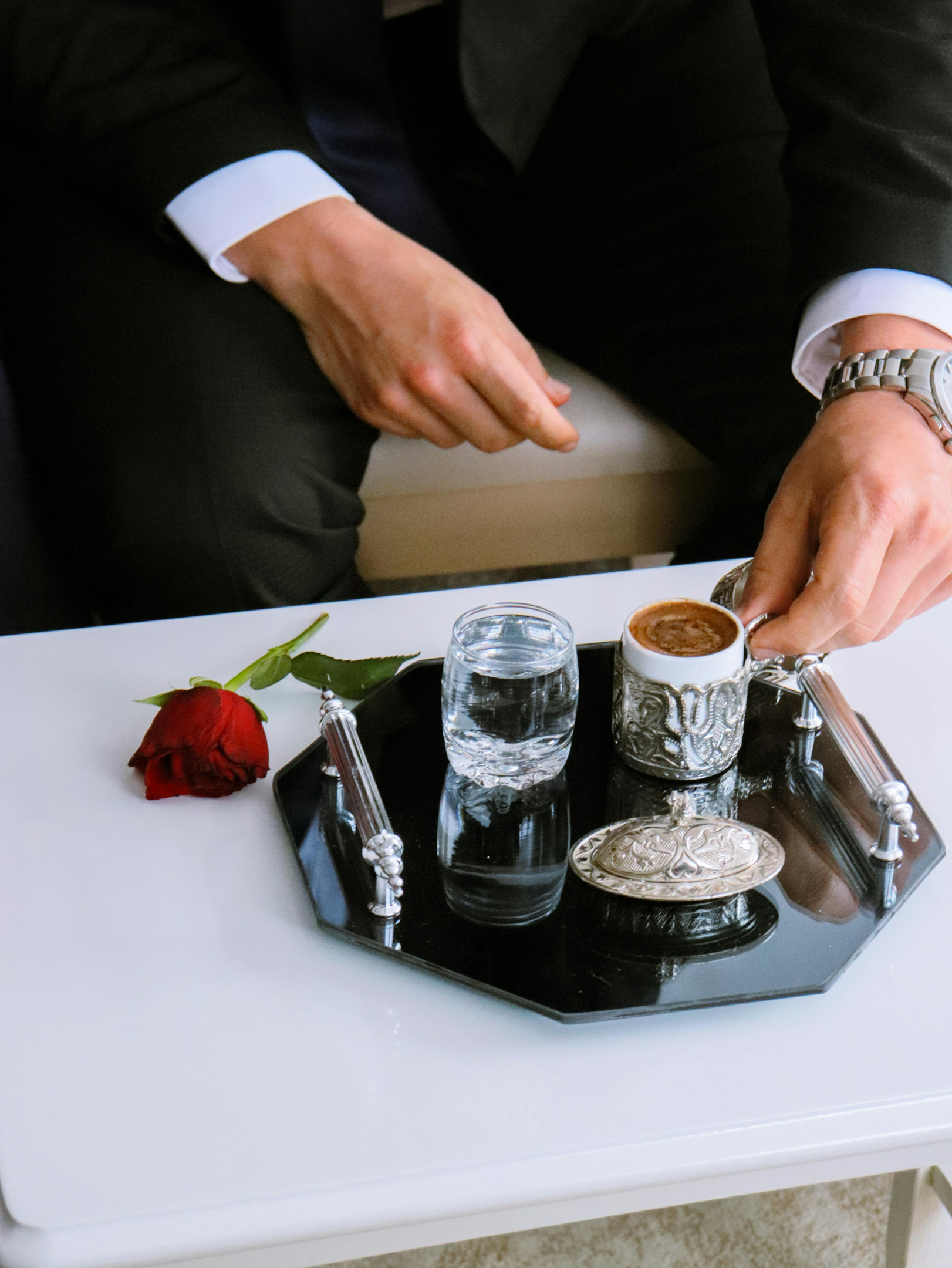
-
French Roast Blend. Often using a base of Central and South American beans, the French roast blend features darker roasts with smoky and chocolate notes dominating the profile.
-
House Blend. A cafe staple with a balanced body and acidity, the house blend is typically created by mixing Central American milds with the fuller bodies of Indonesian coffees.
-
Italian Roast Blend. An extremely dark roast with a bold, charred flavor, the Italian roast blend is usually a combination of beans from Asia or the Pacific regions.
Selecting Beans for Your Blend
You don't just go eeny-meeny-miny-moe when choosing beans; you must consider the beans' origins and roast levels. Understanding these elements will allow you to craft a delicious blend.
Consider the Bean's Origin
The origin of your coffee beans is the foundation of your coffee blend. Beans from different regions have distinct characteristics and inherent flavor profiles influenced by the region's soil, climate, and altitude — collectively known as terroir.
Each origin contributes unique elements that can transform your blend, offering flavors as rich and diverse as the landscapes from which they are sourced. Here are some examples:
-
African coffee beans, for example, are known for their vibrant acidity and exuberant flavors. Ethiopian Yirgacheffe beans boast delicate floral notes and citrus hints, while Kenyan beans provide a juicy acidity reminiscent of blackcurrants.
-
Latin American coffee beans balance acidity and body. Colombian beans offer smoothness with subtle nutty undertones, while Brazilian beans contribute a rich, chocolatey depth.

-
Asian coffees like Indonesia's Sumatran Mandheling feature intense earthiness and spice hints, while Vietnamese Robusta adds boldness and creaminess.
-
Middle Eastern Yemeni beans bring winey notes and spice, adding complexity to your blend.
-
Oceania's offerings include Papua New Guinea's bold tropical fruit flavors and Hawaiian Kona's smooth chocolate and nutmeg notes, enriching your blend with unique characteristics.
To create a satisfying coffee experience, you must explore the unique qualities of beans from different regions and discover the combinations that suit your taste.
The Role of Roast Levels in Coffee Blending
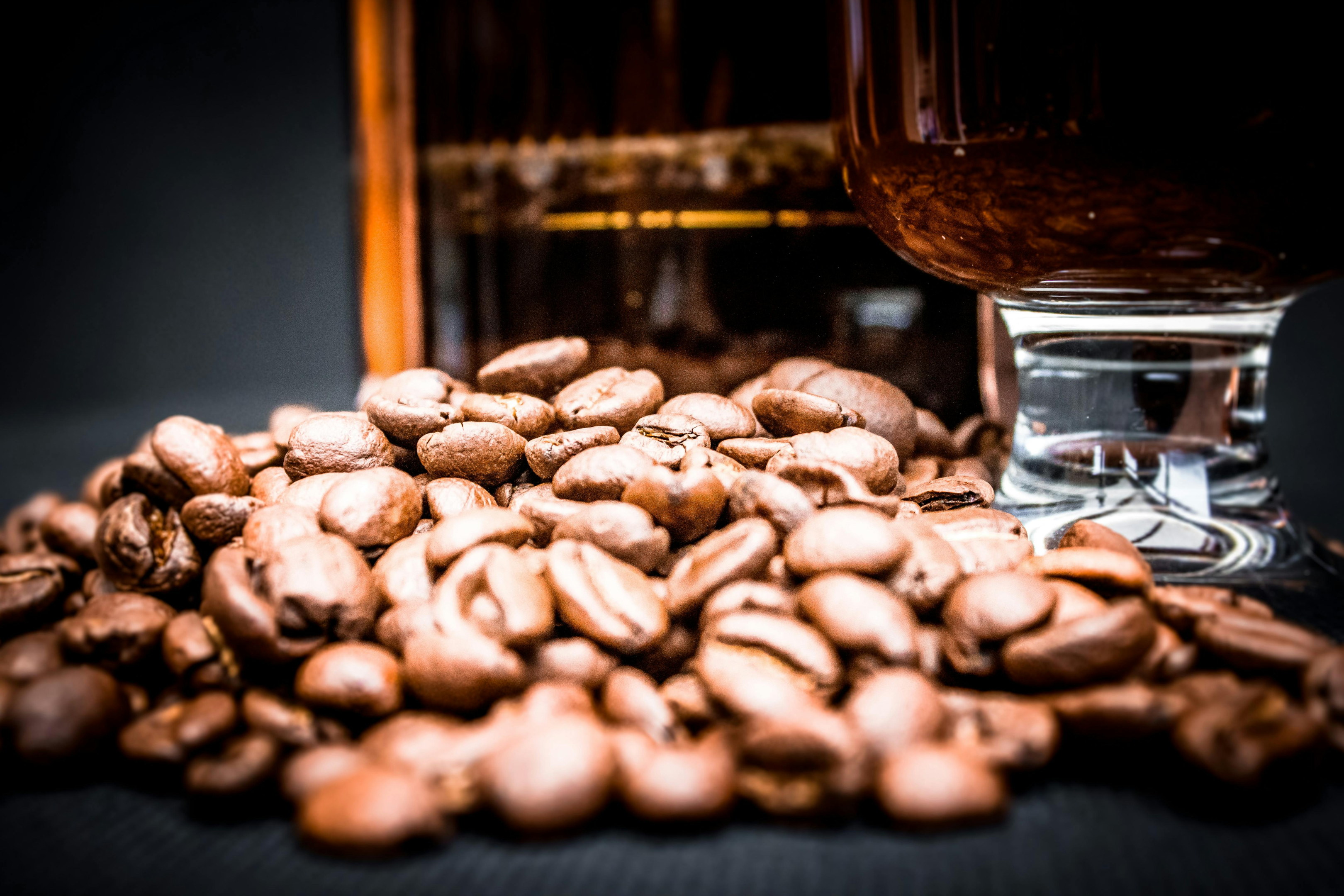
Roast levels can significantly impact the coffee's final flavor profile, aroma, and texture. Here's how each roast level highlights the individual characteristics of each coffee origin:
-
Light Roasts. Light roasts add brightness, acidity, and distinct fruity or floral notes. Coffee blends with a higher proportion of lightly roasted beans can have a crisp, lively quality with delicate flavors.
-
Medium Roasts. Medium roasts offer richer body, balanced flavors (sweetness, caramel, nuttiness), and structure for blends without dominating other elements.
-
Dark Roasts. Dark roasts develop depth, bitterness, and a fuller body with chocolatey, smoky, or toasted notes, ideal for strong coffee or blends needing a bold base.
Blending different roast levels lets you create unique flavor profiles. For example, combining light and medium roasts can produce a bright and balanced coffee. Adding dark-roasted beans to a blend can introduce a rich, bold character while maintaining overall harmony.
Crafting Your First Coffee Blend
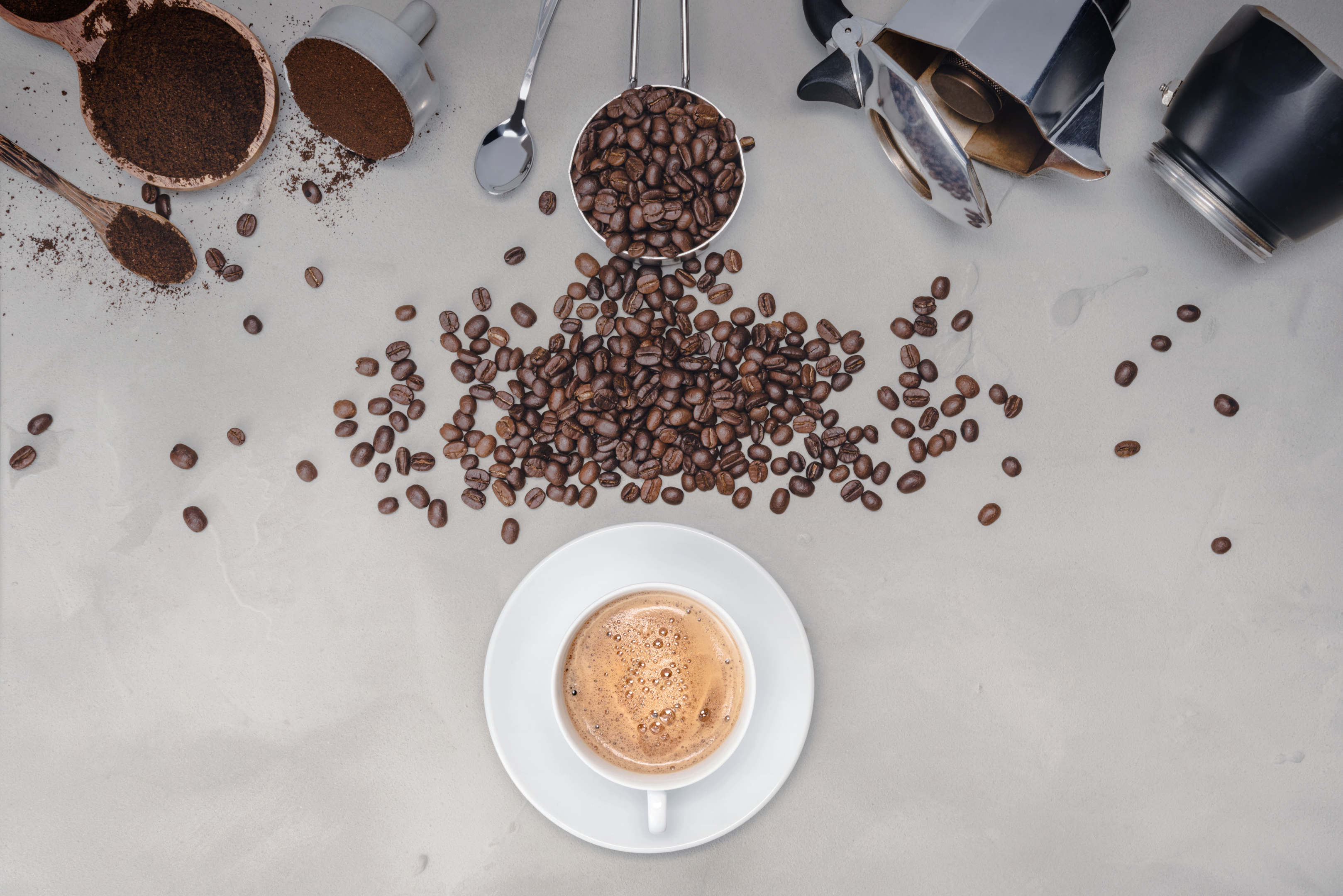
By carefully selecting your coffee beans and combining varying roast levels, you can craft blends that capture diverse tastes — from bright and lively to rich and robust.
Before you start blending, consider what you want in your coffee. Do you prefer brightness and acidity, or a darker, richer brew? Your preferences will guide your choice of beans and help you create complementary blends with components that enhance each other's flavors.
Beginner-Friendly Coffee Blending Combinations
For beginners, it's best to start with coffees with distinct but complementary flavor profiles. This allows you to easily identify the unique characteristics each bean brings to the blend. Here are some good options:
Smooth and Bright: Ethiopian Yirgacheffe + Colombian Supremo
Yirgacheffe's bright acidity, citrusy notes, and floral aroma add a lively and complex element, while the Supremo's smooth body, chocolatey notes, and sweetness, provide balance and richness to the blend.
Balanced and Nutty: Guatemalan Antigua + Brazilian Santos
Antigua beans feature a well-balanced profile with notes of chocolate, caramel, and a hint of citrus. Pair it with smooth and nutty Brazilian Santos coffee and you get a harmonious and complex cup.
Floral and Caramel: Ethiopian Harrar + Costa Rican Tarrazu
Costa Rican Tarrazu's nuttiness and caramel notes are a sweet complement to Ethiopian Harrar's distinctive floral aroma and jasmine and citrus notes.

Pro Tip:
Blending isn't limited to creating contrast and complexity. You can also blend coffees to highlight a specific flavor profile. Here are some examples:
-
Bold & Chocolatey: Sumatran Mandheling forms the base with dark chocolate notes, while Guatemalan Huehuetenango adds sweetness and body for a balanced blend.
-
Smooth & Nutty: Brazilian Cerrado provides a smooth and nutty foundation while Costa Rican Tarrazu adds sweetness and subtle fruit complexity without overpowering the nuttiness.
-
Bright & Citrusy: Ethiopian Yirgacheffe is the core with bright acidity and citrus notes. Kenyan AA reinforces the acidity and adds complementary berry notes.
Finding Your Ideal Coffee Blend
-
Start with small batches. Begin with 100 to 200 grams of each bean type to create several test blends without wasting resources. This approach lets you fine-tune your blends and find the right balance of flavors before moving on to larger batches.
-
Combine different origins.Mix equal parts of two different beans to understand how their flavors contrast with or complement each other. For example, you can pair a bright, acidic bean with a smoother, sweeter one.
-
Adjust the ratios. Experiment by changing the proportions of the beans. A higher proportion of one type can emphasize specific characteristics, while a more balanced ratio creates a harmonious blend. Start with a 50/50 mix and then adjust as needed.

-
Keep detailed notes. Document the beans used, the ratios, and your impressions of the final outcome to help you track which combinations work best and why. With this approach, you can refine your coffee blend over time.
-
Identify your ideal coffee blend. As you experiment with different ratios, pay attention to the flavors and balance in each cup. Find a combination you like and refine it by adjusting the ratios until you achieve the sweet spot.
-
Test and repeat. Continue experimenting with new combinations and adjusting ratios as you gain a better understanding of how the beans interact. This will help you create a coffee blend that's uniquely yours.
Pre-Roast vs. Post-Roast Blending
Blending can occur either before or after roasting, with each method offering unique advantages. Here's a breakdown of each approach:
Pre-Roast Blending
Pre-roast blending involves combining green coffee beans before roasting. This method creates a more uniform roast, as all the beans are roasted together, resulting in a consistent flavor profile. Commercial roasters typically pre-roast their beans to maintain consistency across large batches.

Post-Roast Blending
Post-roast blending involves roasting each type of bean separately before combining them. This approach offers greater control over individual roast levels, allowing you to highlight specific characteristics of each bean. Blending different roast levels can add depth and complexity to the final coffee. This method is perfect for those who enjoy experimenting with varying roast profiles and want to customize their blends with precision.
Choosing the Right Roast
Pre-roast or post-roast? It depends on your desired outcome. Both methods can yield excellent results, so don't hesitate to experiment and find what works best for you.
How Grinding Coffee Beans Affects Your Blends
To the uninitiated, coffee grinding seems like an unnecessary activity. Why buy beans to roast and grind when you can buy pre-ground coffee? However, many coffee drinkers know that the size of coffee grounds dramatically impacts the blend's final flavor and consistency.
-
Surface Area is Key. The finer your grounds are, the faster the extraction. This results in a more intense and robust cup with a pronounced acidity and potentially a touch of bitterness.
-
Coarseness for Control. A coarser grind creates less surface area. Water takes longer to penetrate coarse grounds, resulting in a slower extraction. You get a milder brew with a smoother, more balanced taste and less pronounced acidity.
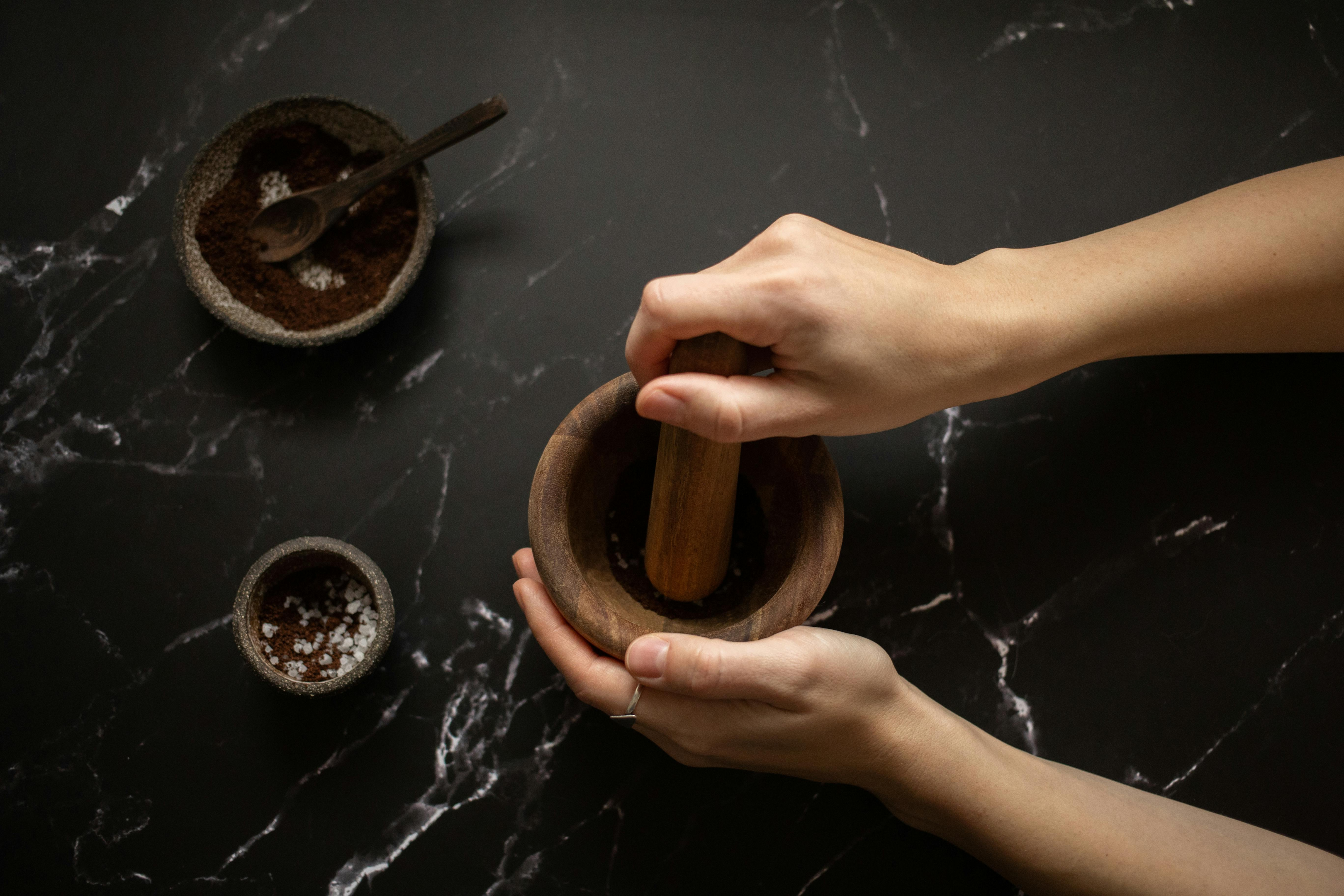
How to Grind Coffee Beans for Your Blend
For best results, use this cheat sheet for refining your coffee blends and tailoring them to your preference:
-
Fine Grind.Perfect for intense, quick brews with bold flavors. A burr grinder works best in achieving this grind.
-
Medium Grind. This grind works well for most drip coffee makers and pour-overs, as it strikes a balance between extraction and flavor for a good body and balanced taste. Blade grinders can achieve a medium grind, but ensure consistency by shaking and pulsing instead of holding the button down.
-
Coarse Grind. Ideal for French press and cold brew methods, this grind results in a smooth, full-bodied coffee with mellow acidity. If you don't have a grinder, you can use a rolling pin to crush the beans to a coarse consistency.
Pro Tip: The best grind size for your blend depends on your specific beans, brewing method, and desired taste profile. Don't be afraid to experiment and adjust to create the perfect cup.
More Tips to Perfect Your Blend
Taste, Tweak, Repeat
Regular taste testing is essential, so ample your coffee to identify areas for flavor adjustment. Focus on balancing acidity, sweetness, and bitterness and adjust your blend's ratios accordingly.
Storing Your Coffee Blend
Proper storage is crucial for maintaining your coffee's freshness and flavor. Use airtight containers and keep your coffee in a cool, dark place to avoid exposure to light and moisture. These storage tips will help preserve your coffee's aroma and taste.
Serving Suggestions

For the best experience, consider serving suggestions that complement your coffee blend's unique flavors. Pair your coffee with baked goods, chocolate, or nuts to enhance the tasting experience. Additionally, explore different brewing methods to unlock various aspects of your blend.
Your Coffee Blending Adventure Awaits
With coffee blending, the possibilities are endless. Understanding the unique characteristics of different single-origin coffees, experimenting with roast levels, and adjusting ratios, can help you create personalized coffee blends that hit the right spot.
The best way to discover your perfect blend is through experimentation. Don't be afraid to try different combinations and adjust ratios until you achieve the perfect cup. So carefully choose those coffee beans, fire up the roaster and grinder, and get ready to unlock a world of personalized coffee experiences.





Dejar un comentario